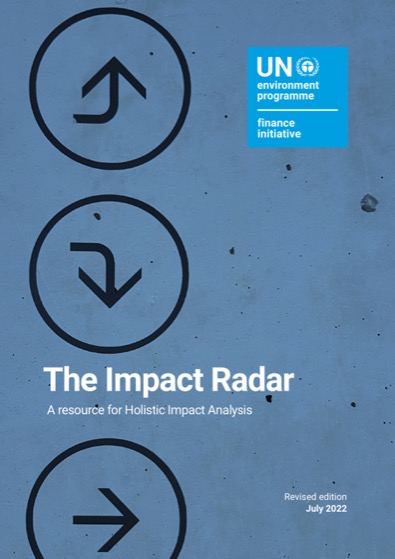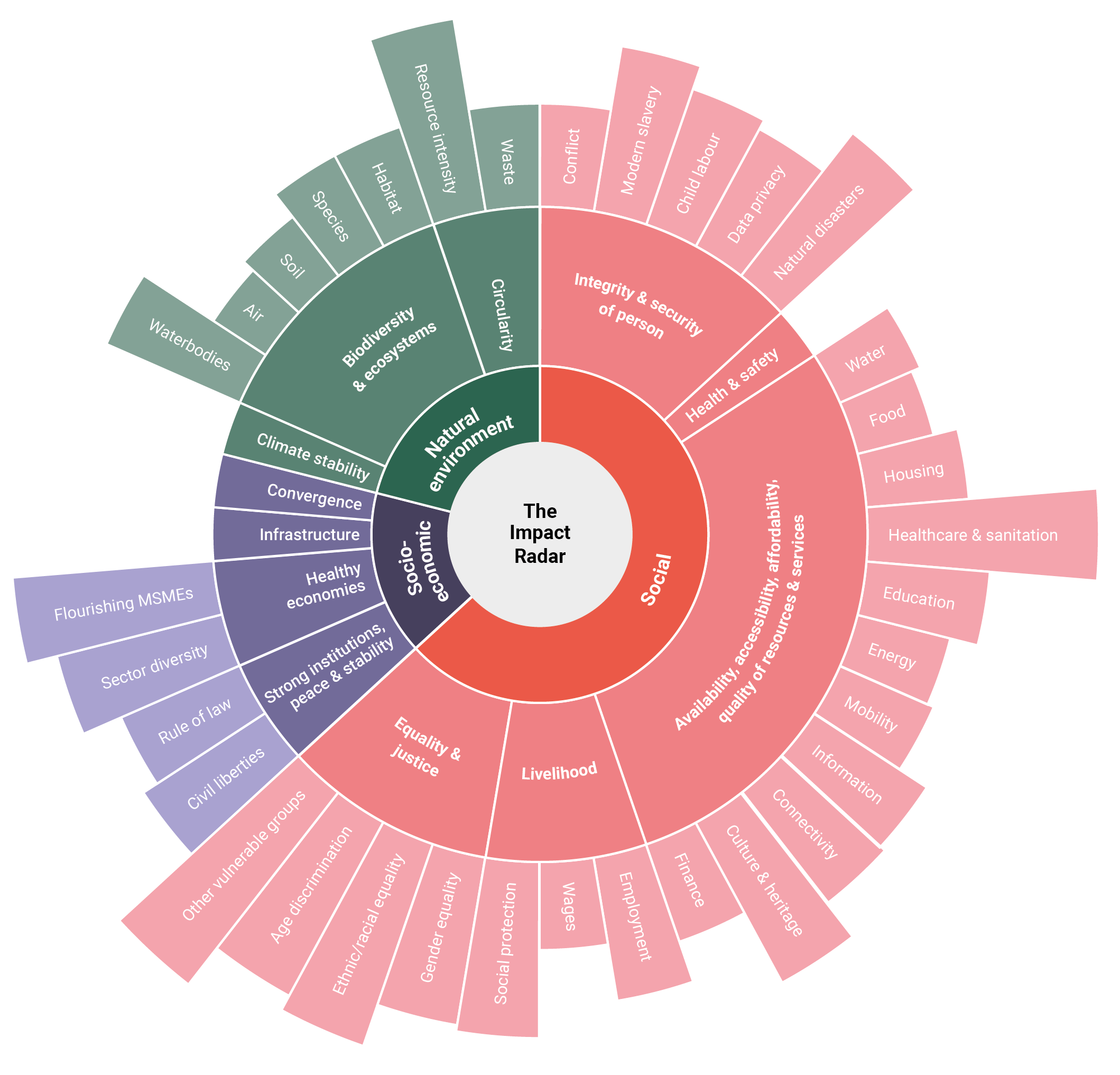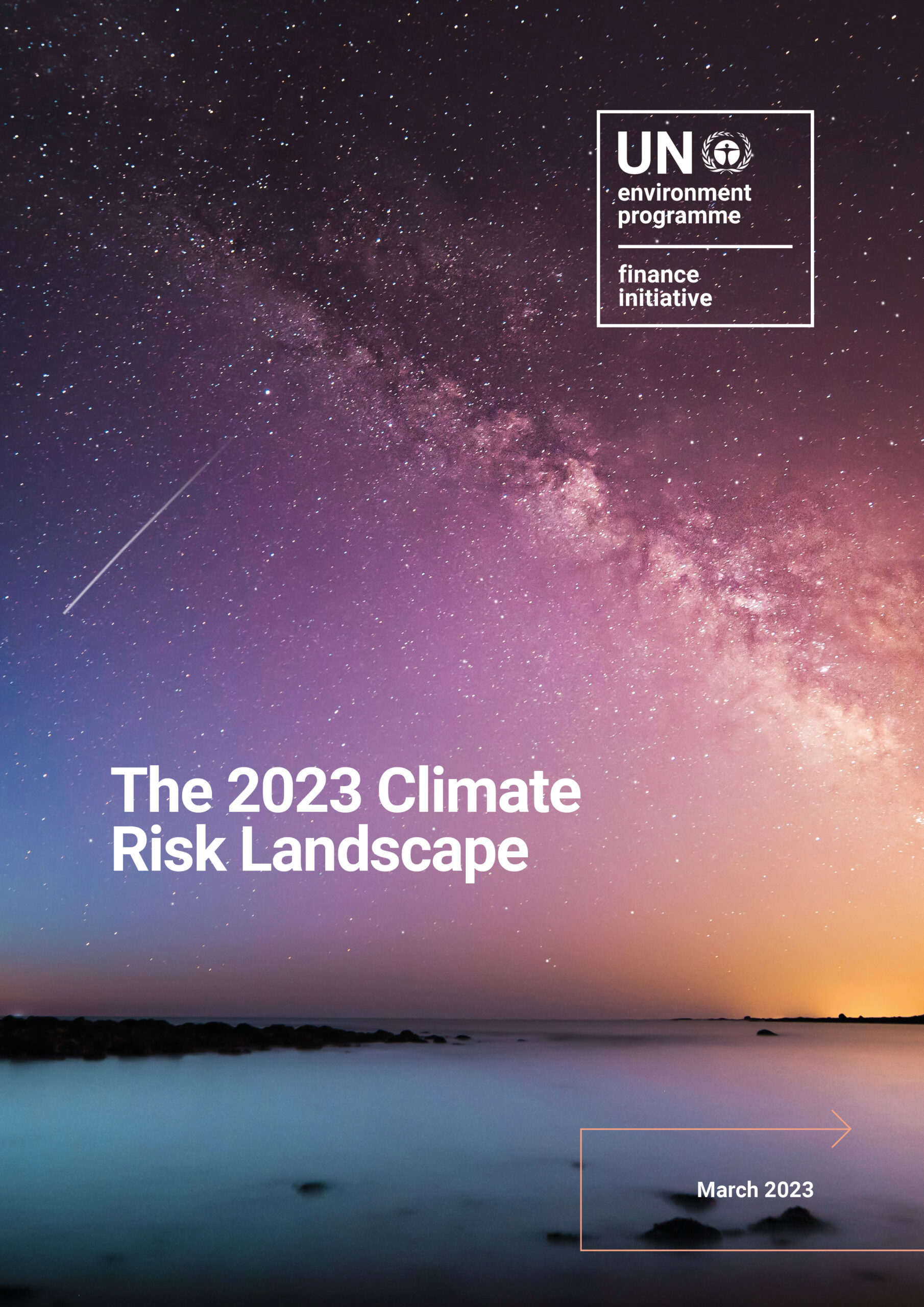The Impact Radar offers a holistic set of Impact Areas and Impact Topics across the three pillars of sustainable development (economic, environmental and social), which can be used by private finance and business to understand and manage positive and negative impacts across the three pillars. The Impact Areas and Topics are defined based on internationally recognized standards and definitions, including the Sustainable Development Goals (SDGs).
- Download the Impact Radar (2022)* here
*SDG-Impact Radar correspondence map updated in February 2023
Evidence shows that funding for the Sustainable Development Goals (SDGs) is far below what is needed and that the gap has in fact widened in the wake of multiple planetary crises.
As seen in UNEP FI’s flagship publication, Rethinking Impact to Finance the SDGs, a holistic impact reading of business practices and country needs and priorities is required to help close the financing gap. A holistic approach is key in that it enables contextualised priority setting and the leveraging of the interlinkages between different sustainability topics.
The Impact Radar, a compilation of Impact Areas and Topics across the three pillars of sustainable development, is a core resource developed by UNEP FI to help operationalise this holistic approach.
The Radar is the basis of various mappings and, as such, has also become the cornerstone of UNEP FI’s Holistic Impact Tools and related guidance surrounding impact management.

About the 2022 Revised Edition
 Building on over three years of experimentation and usage by a growing community of practice both within and beyond UNEP FI’s membership, the Impact Radar has been revised for even better impact analysis and management.
Building on over three years of experimentation and usage by a growing community of practice both within and beyond UNEP FI’s membership, the Impact Radar has been revised for even better impact analysis and management.
The present revised edition of the Radar was prepared to reflect the lessons learned from over three years of experimentation and usage by a growing community of practice both within and beyond UNEP FI’s membership.
The new edition also seeks to respond to the growing need and demand for interoperability, a topic for which UNEP FI has become a champion through its work as co-chair of the Impact Management Platform, a collaboration between leading providers of public good standards and guidance for managing sustainability impacts.
Our aspiration through the Impact Radar is to continue to spearhead and facilitate holistic impact analysis and management, as the key to unlocking the impact-ready and impact-based economy we need to deliver the SDGs.
FAQs
Below are some of the most frequently asked questions in regards to the Impact Radar (2022), you can find a detailed response to these here.
- Why an Impact Radar? Why not just use the SDGs?
- How were the Impact Areas and Impact Topics of the Impact Radar determined?
- Why are some topics not immediately visible in the Impact Radar? Where are Climate Change Adaptation, Climate Change Mitigation, Financial Health & Inclusion, Human Rights, Pollution, Nature?
- Why are there two Impact Topics for Water?
- Why is Energy under the Social pillar rather than the Environmental pillar?
- Does the Impact Radar get revised? If so, how often?
Additional Resources
- Watch the launch and walk-through of the new Impact Radar, featuring UNEP FI, RBInternational and Alex Bank here
- Access the previous version of the Impact Radar here
Contacts
Questions? Feedback? Interested in using the Radar to develop a resource? Developing interoperability solutions?
- Contact us: positiveimpact@unepfi.org
Copyright © United Nations Environment Programme, 2022
This publication may be reproduced in whole or in part and in any form for educational or non-profit purposes without special permission, provided acknowledgement of the source is made. The United Nations Environment Programme Finance Initiative would appreciate receiving a copy of any publication that uses this publication as a source. No use of this publication may be made for resale or for any other commercial purpose whatsoever without prior permission in writing from the United Nations Environment Programme Finance Initiative.
The designations employed and the presentation of the material in this publication do not imply the expression of any opinion whatsoever on the part of the United Nations Environment Programme Finance Initiative concerning the legal status of any country, territory, city or area or of its authorities, or concerning delimitation of its frontiers or boundaries. Moreover, the views expressed do not necessarily represent the decision or the stated policy of the United Nations Environment Programme Finance Initiative, nor does citing of trade names or commercial processes constitute endorsement.
© Maps, photos and illustrations as specified
Disclaimer
It is our hope that the Impact Radar will be a source of inspiration to many organisations as they develop their in-house impact management capabilities and/or any advisory services and products on impact management for third parties.
Any resources, tools, systems, products or services developed based on, referring to or otherwise using the Impact Radar should acknowledge UNEP FI, however, the results, as well as any associated outcomes and decisions made based on such resources, are exclusively attributable to their developers and their own interpretation of the Impact Radar. In no case may these be assumed to be aligned with UNEP FI’s views and methodologies and/or to have been validated, approved or otherwise certified by UNEP FI.
UNEP FI does not provide advisory services or certification for any resources, tools, systems, products or services developed based on, referring to or otherwising using the Impact Radar.


